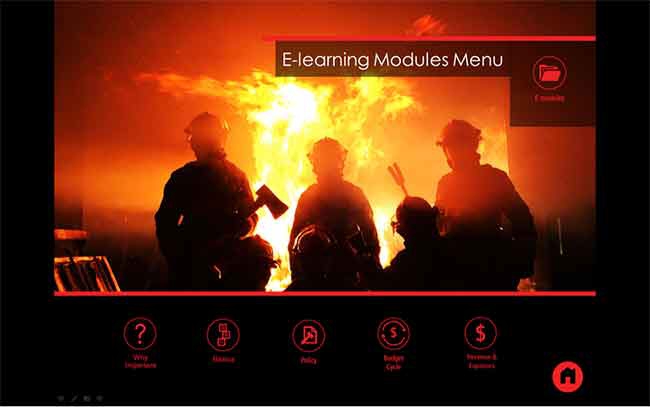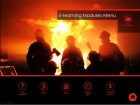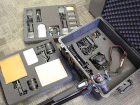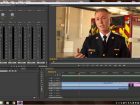
Equipment
Embracing e-learning
February 2016 - As a training officer, I believe that e-learning dramatically improves fire-service training, which, in turn, allows us to serve our communities more effectively.
February 12, 2016
By Chris Davison-Vanderburg
 ffective e-learning programs provide digestible chunks of information Almost anyone can throw a PowerPoint online and call it virtual training
ffective e-learning programs provide digestible chunks of information Almost anyone can throw a PowerPoint online and call it virtual trainingIn the December issue of Fire Fighting in Canada I wrote about the benefits of e-learning for the individual firefighter and the organization, however, I also cautioned that taking your fire department down this path is not easy. If you are going to take the plunge into e-learning, you need to be prepared for the initial investment in both time and resources required to launch a successful program.
In January 2014 I was asked to create e-learning content for my fire department. Being a hands-on, teach-them-at-the-pump kind of officer, I was forced into a world about which I knew little. If you, too, are dazzled by the benefits and possibilities of the virtual classroom, I hope my experience can help save some of the pigment in your hair.
■ Decide what e-learning means to you
To begin, you’ll need to do some research on what is possible for your department. E-learning encompasses a great many things, from maintaining a department YouTube channel to purchasing pre-packaged materials or even just posting a number of articles in a central place to be accessed by computer. E-learning includes discussion forums, webcasts, screen casting and animated presentations. Essentially, anything that can be accessed from a remote location on a computer qualifies as e-learning, so it’s important to define what you want to accomplish.
Remember that your front-line people need training that is realistic, relevant to their roles and a good use of their time. You need to continuously ask, “How do I ensure that the student is remaining engaged and is absorbing the lesson?” In a face-to-face training environment it is easy for instructors to gauge engagement because they can see if firefighters in the back row are falling asleep and can wake them up with direct questions or a planned group activity. In a virtual classroom it’s even more important that trainers be creative and keep things fun and interesting, which means that lessons need to be meticulously planned.
I know of a large urban department that uses an e-learning program that is essentially a presentation slide deck that the users flips through at their leisure. This style of program is about as effective as handing out a memo, asking people to read it and then calling it training. Firefighters will match that level of effort by sitting back and hitting the “next” button while they watch the hockey game. On the other hand, if the program is creative and uses engaging content, firefighters will sit up and pay attention.
There are plenty of examples of interesting e-learning programs used by other industries, so I’d recommend taking some time to get ideas from both inside and outside the fire service. Once you have decided what e-learning means to your department you can begin matching your available resources to your training goals.
In Brampton, we have found that our front-line crews appreciate chewable chunks of information, video footage of our own people telling our stories and concisely written, graphically rich messages. Firefighters also appreciate having the ability to choose their own training adventures. We break down material and label it as must know or required, and additional or supplemental information. When learners can control their training times, they stay engaged and learn more effectively. Consider that firefighters arrive at training sessions with varied levels of ability and knowledge, so why not appeal to their individual needs by tailoring e-learning content to what they require? Everyone hates sitting in a room with that one person who needs details and keeps asking question after question. Some individuals want all of the information, and others just want to know where the rubber meets the road. With tailored e-learning modules, trainers can keep both types of learners in mind and give them the control to customize their learning experiences.
■ Consider the delivery system
At some point during your e-learning journey, you’ll need to figure out where and how your firefighters will access the learning materials. A learning management system (LMS) provides useful backend record keeping and analytical functionality. There are many different ways that you can deliver content and track student results; these include free online products such as Moodle, systems being offered by the fire-service textbook publishers, paid online subscription services such as Articulate Online or fully integrated learning management systems that will likely require you to brush up on your knowledge of procurement policy. Getting into the differences and features of these systems is like having a fire apparatus without firefighters who know how to use the pump.
It is possible to provide e-learning without an LMS by posting content onto network drives and department websites or by handing out USB keys with the lessons pre-loaded onto them, however, you lose many benefits that are included with interactive systems. While an LMS is certainly a big part of e-learning and something you will want to research before launching a program, the system is only worth the content it delivers. I believe that you are more likely to launch a successful e-learning program by prioritizing the instructional material.
■ Determine content creation
Great lesson material will drive your e-learning program forward and lousy content will cause it to sink and burn. Firefighters want training that is a valuable use of their time. If your e-learning program begins with content that is less than inspiring, it will be dismissed by the very people it is intended to help. Content is king and well-thought-out and scripted e-learning modules take time and effort to create.
So, how do you build great content? As you would with traditional teaching, start lesson planning with learning objectives and outcomes. Determine the must-know and the nice-to-know items in the training. Once you know the end goal of the learning session, you need to figure out how you are going to get there.
It is easier to build lesson content if you record videos or computer screen casts in which you ad lib from a list of key points, much like lecturing in a classroom. E-learning authoring software such as Adobe Captivate or Articulate Storyline allow you to build fully animated and narrated messages, but take more upfront production time to storyboard and script a message word for word, and then tie in the visual and media elements. Alternately, a well-thought-out question on a discussion forum allows students to engage directly with the content and to teach each other, and requires very little development time.
At every opportunity, build in activities and items that get the students to engage directly with the materials. Activities will keep firefighters’ attention and force them to recall and use the information they are learning. A great classroom session actively involves the students and keeps them continuously engaged; great e-learning modules are exactly the same.
■ Ensure a solid return on investment
Building e-learning material is a challenging and time-consuming process. Once a module is finished, however, it is used over and over again and the return on investment increases with each additional student who views the module. In Brampton, we have spent anywhere from 100 to more than 300 hours developing lessons that take between 20 minutes and three hours for students to complete. That may seem like a monumental effort, but especially for classes that are taught over and over again, it saves time in the long run. Knowing that, you’ll want to prioritize lessons that have a longer shelf life and ones that will be used repeatedly.
Which modules will have the most mileage? What items are absolutely imperative in order to have everyone on the same page? Which items show up time and time again and are not likely to change much? Think about WHMIS training, health and safety training, medical training, recruit training, traffic control, incident-command system, and so on.
■ Consider who will create content
When it comes to content, everything centres on teaching ability – there are great teachers and lousy ones. The great teachers are the ones who know how to keep the room alive, the students engaged and the lessons fun and interesting. E-learning modules will be more successful if they have students interact with the materials, make decisions, and participate somehow, either with the module or with other students. Set the tone for your entire program from the very first module by picking an excellent instructor.
Is there someone in your department who understands both fire-service training and how to use technology? E-learning is heavily based on visual communication, so members with graphic design and/or video-production experience would be extremely helpful. Once you recruit these members, allow them some time to develop their skills. Efficiencies come with experience and you will need to be patient and allow your people the opportunity to gain that experience.
I regularly use Adobe Illustrator and Photoshop to create the graphical assets for the modules and Adobe Premiere Pro for video editing. I use Camtasia for screencasting videos and Articulate Presenter, Engage and Quizmaker are my e-learning authoring tools at the moment. Brampton uses SharePoint 2007 for all city departments and we use it to host information and discussion forums.
Video editing and production cost have reduced dramatically over the past few years but you’ll still need a robust computer with excellent processing capabilities. You will want digital SLR cameras with an audio-input jack (built-in camera microphones are not worth using). Camera accessories such as a quality tripod preferably with panning capability, bags, extra batteries, memory cards and some lens options such as wide angle or zoom are helpful. We recently picked up a second camera so that we can shoot the same footage from different angles and combine them in post production. For sound we use a Zoom H4n field recorder and Sennheiser wireless lavalier microphones. We have three LED lights and an assortment of tripods as well as a backdrop screen. While our first e-learning modules were created using iPhone videos and free editing software, the equipment mentioned cost us less than $10,000 and dramatically increased our video quality.
I hope you can appreciate the effort that goes into e-learning development. Take the time to plan your e-learning program properly; avoid publishing a PowerPoint and expecting your front-line responders to respond favourably. E-learning will change the way firefighters teach and learn, but it requires an up-front investment to ensure the program is sustainable.
Chris Davison-Vanderburg is a training officer with Brampton Fire and Emergency Services in Ontario. He has been a member of the fire service since 2004. Email Chris at chris.vanderburg@brampton.ca and follow him on Twitter at @CapHyphen
Print this page


